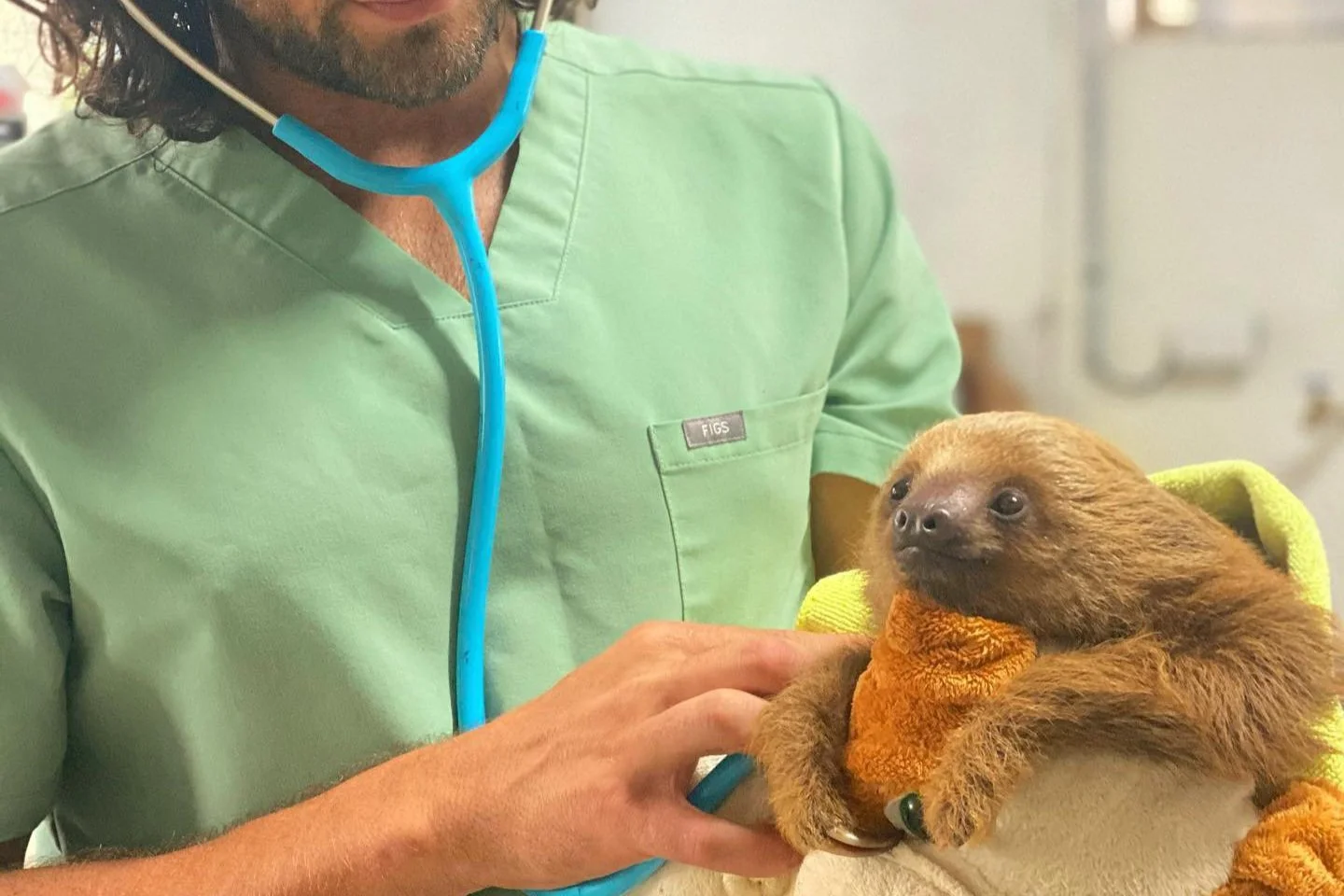Article by Andrew Kushnir
I'm excited to be addressing you all again in the Swampin Newsletter, this time with a fun recap of a recent trip I had working at a wildlife center in Costa Rica! I had the pleasure of spending just over a month living at a center just outside the capital city of San Jose. And though ironically the most numerous species that presented to the hospital were opossums and raccoons (2 of my "bread and butter" species being a wildlife vet in San Diego) I also had the opportunity to work very closely with a number of other amazing species including squirrel monkeys, kinkajous, coatimundi, macaws, parrots, and SLOTHS! Sloths rapidly became some of my favorite animals to work with and I thought I'd share some fun things I learned about these critters with y'all!
Sloths are amongst the most unique critters on the planet and belong to the Xenarthran family; other members include anteaters and armadillos. Xenarthra translates from Greek to "strange joints," referring to extra articulations along the vertebral column and a fused pelvis-sacrum. We're all probably familiar with the slow pace of sloth-Life, but they can be surprisingly quick and deceivingly strong when they need to be! Armed with long claws and sharp teeth, I had to be very mindful of my limbs while handling them so as not to get bit. Ok, ok, so many amazing things about sloths!
1) Adults only defecate about once a week and will hold up to 1/3 of their body weight in waste material until "they go." Spending nearly their entire Lives in the forest canopy, sloths will make the arduous and perilous journey to the forest floor roughly once a week to "do their business." Once reaching the ground, they will wrap their limbs around the base of a tree with their bums touching the ground, and defecate away. This is easily the most vulnerable time in a sloths' schedule, since any would-be ground predator would find an easy target in an occupied sloth.
2) All species of sloth are considered "rod monochromats," meaning they completely lack cone cells in their eyes- these are the photoreceptor cells responsible for color vision. Thus, all sloths are colorblind! They also can only see poorly in dim light and are essentially blind in bright sunlight. They rely heavily on their phenomenal sense of smell and amazing spatial memory to navigate their way in the forest canopy.
3) Speaking of navigating through the canopy, sloths are known for effortlessly hanging upside down for prolonged periods of time- an ability that would cause most other mammals to experience some serious respiratory distress from the weight of our abdominal organs pressing against the diaphragm and onto our lungs. Well sloths solved that problem: just tape the internal organs to the ribs and hips! Like living internal hammocks, sloths have fibrinous sheets that passively hold their abdominal organs relatively in place so as not to compress the lungs when hanging upside down or inverted. And for animals that can hold 1/3 of their body weight in waste material, the stomach and intestines can become quite heavy!
Most of the sloths that presented to the hospital were young who were either found abandoned by mom or confiscated from folks who wanted a pet sloth. Unfortunately, making pets of wildlife is tragically common in Costa Rica despite it being illegal, and animals ranging from sloths to macaws are far too often pulled from the wild to be raised in people's homes. Luckily there are many centers in Costa Rica that not only rescue and rehabilitate wildlife, but also provide lifelong sanctuary to those that are deemed non-releasable.
I hope you find this information about sloths as interesting as I do! Costa Rica is such a paradise and really anyone with a passion for wildlife would find it a perfect place to learn and explore. Wishing everyone well in 2022!
Dr. Andrew Kushnir




